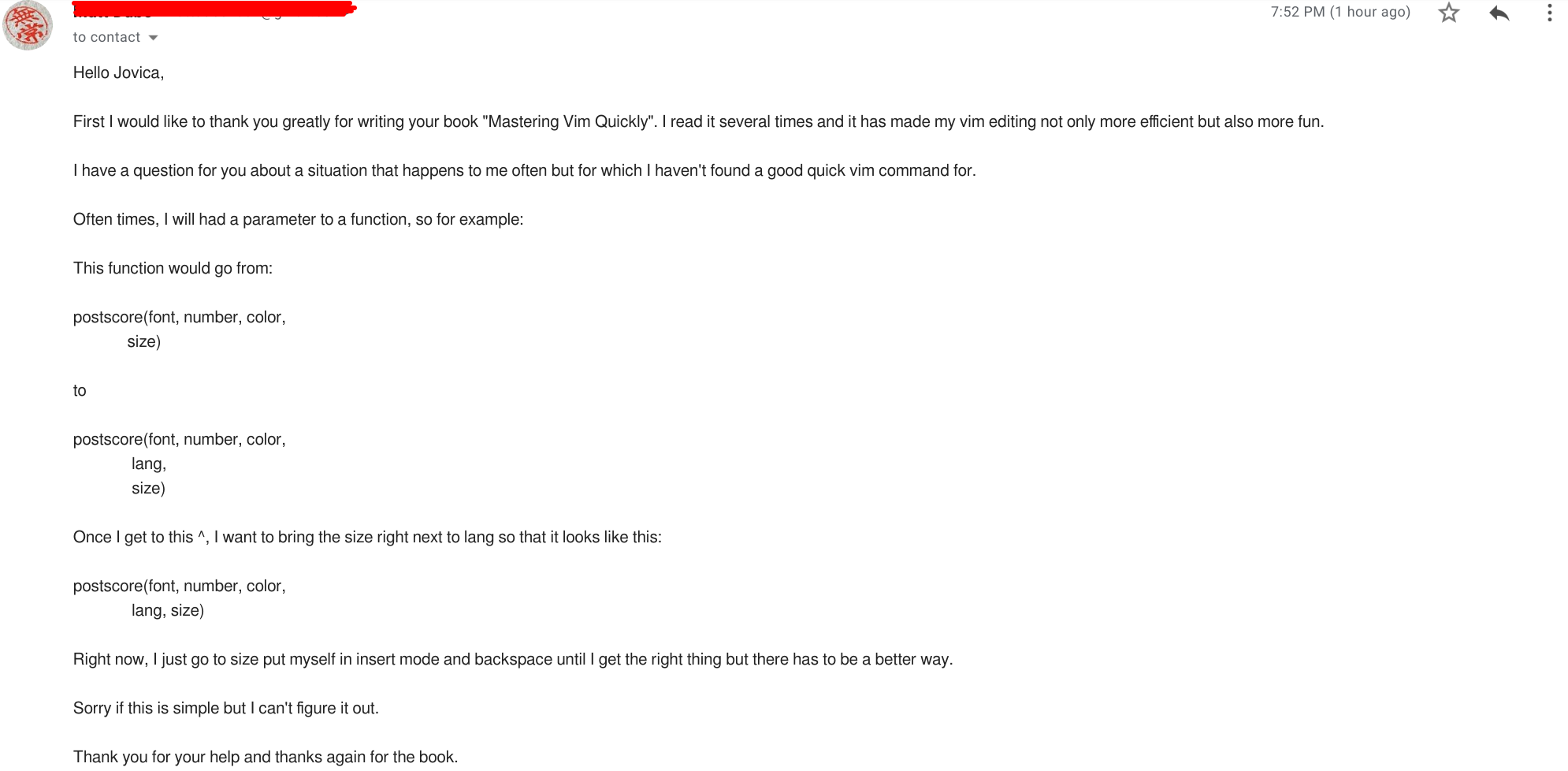What is Vim?
If, for some strange reason, you don’t know what Vim is, here’s the short answer:
Vim is a highly configurable text editor built to enable efficient text editing. It is an improved version of the vi editor distributed with most UNIX systems. Vim is distributed free as charityware. – http://www.vim.org/
You should also know that Vim (a contraction of Vi IMproved) is a text editor written by Bram Moolenaar and first released publicly in 1991. Based on the vi editor common to Unix-like systems, Vim is designed for use both from a command line interface and as a standalone application in a graphical user interface.
Simply saying, Vim is a powerful text editor for programmers, power users and command-line gurus.
The History of Vim
When Bram Moolenaar had bought an Amiga computer, he wanted to use the editor he learned on Unix. Since there was no good Vi for the Amiga, he started with the best that was available (a program called Stevie) and started improving it.
At first, his goal was to imitate Vi. Later new functionality was added, and by version 1.22 Vim included more features than Vi. That time it was renamed from Vi IMitation to Vi IMproved. Over time the gap has grown wider, now it’s hard to think of a reason to use Vi instead of Vim. I would recommend all Vi users to switch to Vim.
Of course, ports to various operating systems have been done by different people. The port to Unix was a milestone, since Vim started competing with Vi. Currently Vim runs on more than a dozen different operating systems. That is awesome indeed.
Vim was made such that it works on many different operating systems. This wasn’t easy. Just supporting the most popular Unix versions is already a big task. Adding support for MS-DOS and MS-Windows gives the additional problem of using file names with a backslash in them. Machines such as the Amiga and the Macintosh have a different kind of operating system, which require specific solutions. – Bram Moolenaar for Free Software Magazine
The first version of Vim that was released to the general public was 1.14, which was published on November 2, 1991. Over time Vim has grown constantly. It has become a complex program. Adding functionality is taking much more effort now than before.
Here’s the timeline of Vim development:
1988 Vim 1.0 Vi IMitation on the Amiga
1991 Vim 1.14 First public release (on Fred Fish disk #591)
1992 Vim 1.22 Port to Unix, renamed to Vi IMproved
1994 Vim 3.0 Multiple windows
1996 Vim 4.0 GUI
1998 Vim 5.0 Syntax highlighting
2001 Vim 6.0 Folding, multi-language
2006 Vim 7.0 On the fly spell checker, support for tabs
The list shows only the most important features, but each version brought us a lot of nice features. For example, if we take version 6.0: the major new feature was folding. But, there were other great features such as UTF-8 support, multi-language support (translated messages and menus), vertical window split, improved performance for syntax highlighting, etc.
Vim has grown to an big open source project, but it’s also important to mention that it’s charityware. The basic idea with charityware is that everybody who uses Vim is asked to donate to a charity. Thus the use of Vim is free, if you think it’s worth something, you can give that money to a good cause. Moolenaar helped with establishing a foundation called ICCF Holland that works to support to a children’s center in Uganda.
Vim today
Unlike the other vi clones, Vim is still actively developed and has a large base of contributors. New features are still being developed and added to the text editor every year, making it even more powerful. Besides that, number of Vim plugins is rapidly growing.
At the moment, Vim 7.4 is the latest stable version. It is highly recommended to update your Vim if you didn’t, because many bugs have been fixed since 7.2 and earlier.
Vim has been my editor of choice since 2008, few months after Linux became my main desktop operating system. In a meanwhile, I have changed few different distributions of Linux, but Vim was always there.
I’ve used it to write many lines of code, edit lots of configuration files, and write tons of documentation. Although I’ve tried to use some of the modern text editors, I haven’t found any that match Vim’s efficiency.
I’m not the only one who, after using Vim almost every day for so many years, is still discovering new features, capabilities, and useful tips that further improve my productivity.
At the moment, my favorite work environment is Gentoo with i3 window manager, oh-my-zsh and Vim. I have never been more productive.
—
Over the years, Vim got a reputation – that it’s really difficult to learn it. I’ve heard many times from guys who are convinced it will take them months to reach proficiency. That’s simply wrong.
That’s why I’ve started to write a book: Mastering Vim Quickly (from WTF to OMG in no time) which will teach you Vim the way I learned it – easily and quickly.
Sign up below for updates about the book.
[mc4wp_form]
If you liked the post, we should get connected - follow me on Twitter


